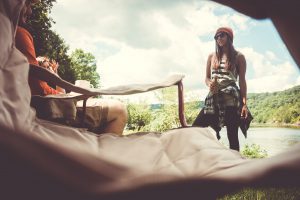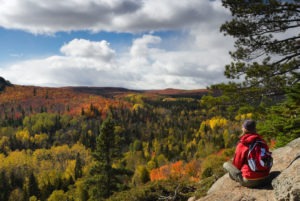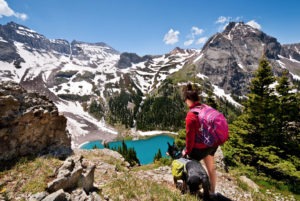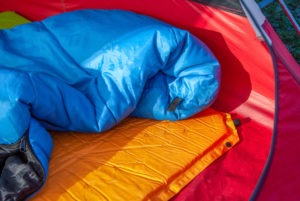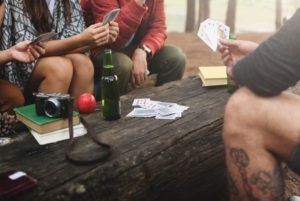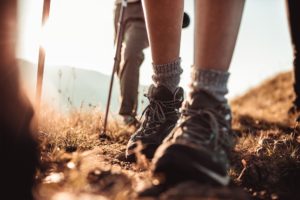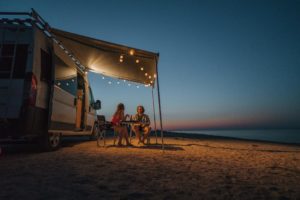Many of you may already be thinking, “What the heck is dispersed camping?”, and you’ll be happy to hear that it’s one of the most fun, fulfilling and, most importantly, the cheapest forms of camping out there.
Dispersed camping is any form of camping in a National Forest outside of a designated campground. There are 193 million acres of National Forest land across the United States that you can camp on… for free. That’s right.
Why is that? Well, simply put, it’s because you own it. National Forests are public land collectively owned by American taxpayers and managed by the United States Forest Service, a division of the Department of Agriculture. This means that it’s all open to you, with only a few minor regulations to be aware of. So, before you pack your bags and run into a nearby forest, here are some important things to know for your first dispersed camping trip.
Leave No Trace:
The most important rule-of-thumb to keep in mind is the practice of “Leave No Trace.” This means simply that you should have as little impact as possible on the environment. When you leave, it should look as though you were never there at all. There are a lot of things you can do to minimize your impact. My top 4 are as follows, but are not limited to these alone. For more info, visit.
- Camp on durable surfaces: camping on a surface like an established trail, rock, gravel, dry grasses or snow minimizes plant damage and provides a more level surface. Have you ever slept at an angle or on a lump? It sucks.
- Dispose of waste properly: Inspect your site for trash when you leave and take everything with you. There is nothing more frustrating than seeing trash scattered throughout a National Forest.
- Minimize campfire impact: Try to use established fire rings if they’re available and keep your fires small. Burn everything to ash, and put them out completely. You should able to touch the coals without burning yourself.
- Respect Wildlife: Don’t follow, touch or feed animals. And keep your food protected!
Find a good campsite:
There is a lot to choose from when going dispersed camping. The U.S Forest Service has plenty of great resources to help you find the perfect campsite, such as this interactive map that shows national forests all throughout the country. It’s basically Google Maps for us camp nerds. (https://www.fs.fed.us/ivm/index.html) You can also use Google Maps itself, as it marks all park and forest land in green. Just make sure it’s actually National Forest land!
If you’re old school like me, you can also use a paper map. Pouring over paper maps late into the night can be pretty fun, especially if you’re planning your trip with friends. I’ve found it adds another element of fun and adventure to your trip. We are intrepid explorers after all, right?
Another good resource is https://www.discovertheforest.org/. Here you can type in your area code and a distance you’re willing to travel, and it will show you parks and forests within that radius. Again, it’s important to distinguish here between National Parks and National Forests.
Ultimately, what looks good on a map may not turn out to be the best place to camp. When this happens, it’s best to look for an ideal spot while you’re there. That’s as simple as waddling about until you find something you like.
Once you’ve found a Forest that interests you, you’ll need to start packing.
What to bring camping:
There are a number of things that are essential to bring with you when dispersed camping, that may not be so important when camping in a designated campground. All of these items are generally associated with the amenities you won’t get while you’re out in the wilderness.
Water. Water is arguably the most important thing you’ll want to stock up on before you leave. Due to an increasing number of campers and visitors, National Forests are often contaminated with microorganisms that can make you very ill. Giardia is a common infection found in natural water sources and can lead to cramps, fatigue, and loose stools. This is also important to know if you’re bringing a dog or other pet, as it can also infect them. There will be few wells out in nature and purifying water can be a hassle (especially if you’re camping far from a good water source.) Having a few cases of bottled water will keep you hydrated, help you cook, and let you easily brush your teeth. Water purification tablets also work to clean water, as well as filtration systems, and boiling is always a safe and reliable option, given you have a pot or pan to do it.
Wood. Depending on where you’re camping, there may or may not be wood available to use. Wood can usually be picked up at or near the field office, or you can buy it ahead of time from somewhere else. Otherwise scavenging for wood is permitted in most forests. When scavenging for wood, do not cut down anything living, and avoid decaying wood. Also remember never to take wood with you when you leave the forest.
Shovel. You likely won’t have a restroom nearby, so you’ll want to pack a small shovel or some other tool to dig with. The general standard to keep your environmental impact to a minimum is to dig a hole at least 6 inches deep. Probably better not to try and do this with your hands.
Toilet Paper & Bag. The reasons for toilet paper are obvious, but the practice of “no trace left behind” necessitates that you leave a campsite with little to no evidence that you were there in the first place. This means taking soiled toilet paper with you. For that, a Ziploc® bag will do just fine. If that grosses you out, you can always get nice and intimate with mother-nature and find a great big leaf.
Compass and Paper map. It can be easy to get lost when you don’t have any clear markers to indicate directions, especially if you spend some time wandering around for a good site. Maps can usually be found at the field office or online.
Protective/preventative gear. There are always going to be pests outdoors, but when camping in an undesignated area, your risk of running into animals is much higher. Here are some simple ways that you can decrease animal traffic.
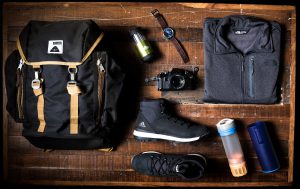
General rules of dispersed camping:
Every forest has a different set of rules to be aware of once you arrive, so it’s important to get a run-down of the place from the local field office. But there are a number of rules that are pretty standard across the board.
First, you’ll need to get a fire permit. These are generally free or very cheap, and can be picked up at the local field office. Some places may not allow fires if the weather has been dry and there is a risk. If you’re unsure, you can always call ahead of time.
Be aware of wildlife refuges. These are protected zones for the rehabilitation of the native habitat. As such, you can’t camp on them.
To help keep water sources safe, camp at least 100 feet away from bodies of water. This is important for two reasons. The first is that human waste, that close to a water source. will likely make its way into the source itself, leading to potential contamination. Pretty gross. The second is that fragile vegetation tends to grow near banks of lakes, streams, and rivers.
Try to camp within 150 feet of the road or path to reduce damage to native wildlife. It’s also a good idea in case you need medical assistance.
You may camp anywhere, for up to 16 days, then you must move at least 5 miles from that spot. You cannot return to that spot within the calendar year.
What to expect:
You should also expect more responsibility. Remember, you own the land and it wouldn’t do you much good to ruin it for yourself or anyone else. Clean up your campsite! You should also be prepared to deal with wild animals. Protect your food and prepare yourself for potential confrontations.
When dispersed camping, expect a lot of peace and quiet. The best thing about this form of camping is that you likely won’t be near anyone else. No conversations to overhear, and no noisy midnight singing and college-aged guitar players (it’s happened to me before.) Dispersed camping is just you and nature, and there are few things so honestly peaceful and refreshing.
In all my years’ camping, I have yet to find a better way to camp. The hushed silence, only ever broken by rustling leaves in the wind. The singing birds and the croaking frogs make the melody, held abreast by the droning of a nearby creek or waterfall. It’s a symphony all too well described, but never sufficiently experienced. So I urge you, plan a dispersed camping trip as soon as you can. You won’t regret it.

